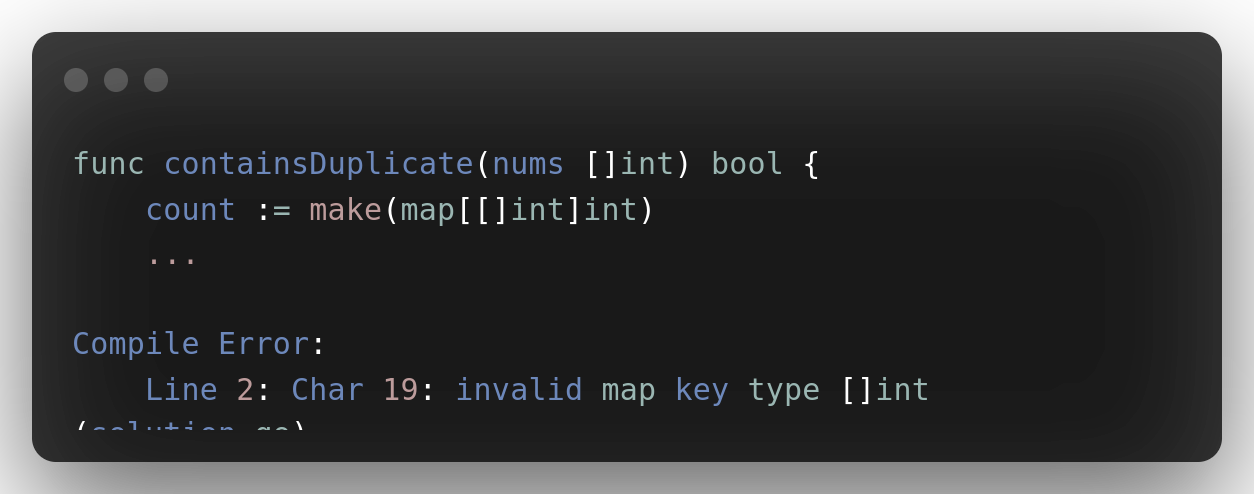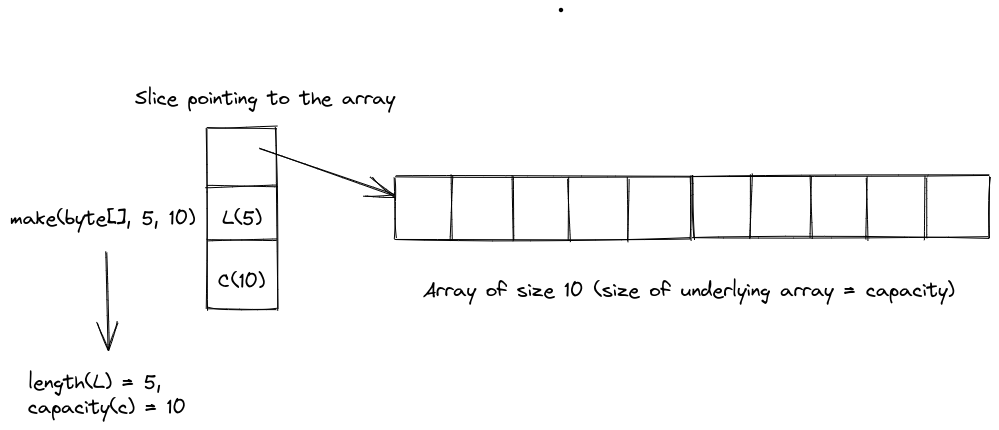GoLang Slice as Key in Map
Whenever I try my hands on competetive programming, my brain's first approach to solve any complex problem is by using slices & maps. I personally find these two Data Structures as the most comforting and efficient.
During my ’new to DS’ days, I tried multiple attempts to use a slice as a key in a map, which obviously failed.
 In order to find the reason for my failures in using the most easiest option (in my eyes), I googled “Why slice can’t be used as a key in map”, and it landed me to the following statement:
“A slice can’t be a key in map, but an array can be.”
In order to find the reason for my failures in using the most easiest option (in my eyes), I googled “Why slice can’t be used as a key in map”, and it landed me to the following statement:
“A slice can’t be a key in map, but an array can be.”
This statement increased my curiosity exponentially. If slice is basically referring to an array at the backened, then why array can be a key but slice can’t be? To find answers to these questions, I initiated my research (could not find any relevant blog then).
GoLang’s Map spec strictly mentions the requirement for a key, i.e.
The comparison operators ‘==’ and ‘!=’ must be fully defined for operands of the key type; thus the key type must not be a function, map, or slice.
The above statement makes it quite clear, that a slice can’t be a key, because two slices can’t be compared using comparison operators. The next question that pops is “Why slices can’t be compared directly when arrays can be?”
Go Slices: usage and internals helped me understand, how slice is just a descriptor of an array, that mainly consists of: Pointer to an array, Length of the segment, Capacity (maximum length of the segment).
Whenever we declare a slice using make(), make allocates an array and returns a slice pointing to that array.

As slice refers to an array, each slice could/couldn’t be pointing to a different array or segments of array. Due to this, a single ‘==’ is not enough to determine if slices are equal or not. (We can obviously compare slices using methods like ‘reflect.DeepEqual()’, but it needs more than just ‘==’).
But the story does not end here, slice’s mutability is another reason that makes it an unfit cadidate to be a key. Go’s Map uses hashmap implementation, so, mutating a value will obviously change the hashmap, which contradicts one of the requirements of a key.
Conclusion of the story :), slices can not be used as key in maps due to the following reasons:
- Slices are mutable, and
- Could not be compared.
